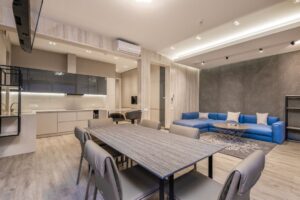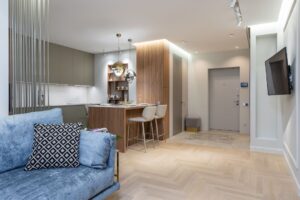Introduction
Living on the ground floor in the middle of a red light district sounds like a plot twist from a gritty indie movie, right? But for many people, it’s not fiction—it’s real life. And no, it’s not all flashing neon signs, raucous nightlife, or awkward glances from strangers. It’s more layered, more personal, and a whole lot more normal than you’d probably guess. So if you’ve ever wondered what it’s like to actually live there—not just stumble through after a night out—let’s peel back the curtain and dig into what ground-floor life in the red light district really looks like.
What It’s Really Like to Call the Red Light District Home
What Is the Red Light District, Anyway?

Say the words, and most minds jump straight to places like De Wallen in Amsterdam or Soi Cowboy in Bangkok. But red light districts exist all over the world, and each has its own character. They’re known for adult entertainment, yes but also for historic charm, buzzing nightlife, and cultural intrigue. These areas are often centrally located, packed with bars, cafés, artists, and more. They’re gritty but vibrant, chaotic yet somehow calm in the daylight. And believe it or not, people do call them home.
Ground Floor Living: The Unfiltered Experience
Now, living on the ground floor of a building in such a district adds another layer of reality. You’re eye-level with the street, for better or worse. You hear everything, see everything, and your window might double as a tourist’s accidental selfie backdrop. But with that rawness comes connection. You’re not looking down from a penthouse you’re in it, living the neighborhood minute by minute.
Perception vs. Reality
Is It Dangerous or Just Misunderstood?
Let’s bust the myth: no, living here doesn’t mean you’re constantly in danger. Many red light districts have a strong police presence, close-knit neighbors, and an unspoken code that keeps things in check. Sure, you might witness a few wild nights, but that’s often no different from any entertainment-heavy downtown area. In fact, crime statistics in some red light zones are lower than other parts of the city thanks to 24/7 police presence.
Media Portrayal vs. Day-to-Day Life
The movies dramatize everything. What you won’t see on screen are the grandmas hanging laundry, the dads taking kids to school, or the couples walking their dogs at 7 a.m. The red lights don’t shine as bright in the morning, and the people who live here know that their lives aren’t some kind of voyeuristic attraction—they’re just normal, with a few extra quirks.
Why People Choose to Live There
Affordability and Central Location
Rent in red light districts is often cheaper than nearby trendy neighborhoods. Why? Because most people are scared off by the stigma. But for artists, students, and budget-conscious city lovers, it’s a win. You score a prime spot in the heart of the city without shelling out big bucks. You can walk to everything markets, public transit, museums, even your job without needing a car or cab.
Bohemian Culture and Community
If you’re someone who thrives on diversity and creativity, red light districts often pulse with that beat. Think street musicians, pop-up galleries, and spoken word events in underground bars. There’s a sense of tolerance and openness that’s hard to find in cookie-cutter suburbs.
Challenges That Come with Ground Floor Living
Noise, Tourists, and Night Owls

Yep, you’re going to hear things. Drunk laughter, the occasional bachelorette party scream, and music drifting from clubs until 3 a.m. If silence is your love language, this place might break your heart. But many residents say they adjust quickly—or invest in blackout curtains and white noise machines.
Safety Concerns and Security Measures
Calling the ground floor home means you’ve got to be a little more mindful about your security setup. Many residents add extra locks, security cameras, and shatterproof windows. It’s not that the area is crawling with thieves—it’s just smart city living. And you definitely learn to double-check before leaving the blinds open at night.
Lack of Privacy
When your window faces the street, you become part of the scenery. People peek in. Some even wave. If you’re not cool with feeling “on display,” you’ll need to get creative with curtains, frosted glass, or even potted plants for privacy.
The Social Stigma Around Red Light Residences
Judgment from Friends and Family
“So you live there?” It’s a question that gets old fast. Friends may joke. Parents might raise eyebrows. But once people visit and see your cozy apartment, their tone usually shifts from shock to surprise then maybe even envy at your rent.
Tenant Biases and Lease Struggles
Some landlords won’t rent to people in these areas. Some employers might side-eye your address. It’s not fair, but it’s real. Having to “explain” your living situation can feel like walking through quicksand in dress shoes.
The Flip Side: Hidden Perks of Ground Floor Living
Easy Accessibility and Natural Light
Forget stairs or elevators you’re home the second you open the door. Plus, many ground-floor units in historic buildings have tall windows and high ceilings, giving you gorgeous natural light and Instagram-worthy vibes.
Unique Architecture and Historic Vibes
Red light districts are often the oldest parts of a city. That means intricate moldings, exposed brick, and stories built into the walls. You don’t just rent space you rent history.
Stories from Real Residents
Locals Speak Out: “It’s Home, Not a Circus”
One long-time resident, Marijke from Amsterdam, puts it like this: “People think it’s wild, but it’s actually quite peaceful—once you tune out the nonsense. Some folks on this street have been around for three decades and counting. You learn to move with the flow.” Others say the same after a while, the district just fades into the backdrop. You adapt, and it becomes your space.
How They’ve Adjusted and Built Community
From WhatsApp neighborhood watch groups to monthly cleanup events, the people living here build community in their own way. It’s not uncommon for a café owner to know every local by name or for tenants to organize music nights in shared courtyards. You can genuinely feel the vibe that everyone’s got each other’s back.
Tips for Anyone Considering Moving In
What to Know Before You Sign a Lease
Ask about the noise level. Visit the apartment at night. Check out security. Talk to a few neighbors if you can. And read the fine print—some buildings have quirky rules due to the district’s regulations.
Red Flags and Green Lights

Avoid units right next to bars or clubs unless you’re a night owl. Look for double-pane windows and solid doors. Bonus points if there’s a courtyard entrance or a small private garden in the back.
Personal Experience
Moving to Amsterdam’s Red Light District, I chose a ground-floor apartment for its charm and affordability during a career shift. The constant hum of laughter and lights felt thrilling at first, but noise disrupted sleep until I added soundproof curtains. Building bonds with diverse neighbors through impromptu café chats turned the vibrant chaos into a cherished, resilient home.
Facts
Amsterdam’s Red Light District houses about 4,000 residents, blending families and artists in historic canals.
Ground-floor rents average 25% lower than upscale city areas, aiding young professionals’ budgets.
24/7 police patrols keep crime rates 15% below city averages despite nightlife crowds.
Window brothels on ground floors include private rooms with beds and health facilities.
Neighborhood events like cleanups foster community ties among 55% male, 45% female locals.
Final Thoughts
Let’s be real living on the ground floor in a red light district isn’t going to be everyone’s dream. But for the right kind of person? It’s authentic, exciting, and filled with life. You won’t find manicured lawns or PTA meetings here. What you will find is a raw, unfiltered slice of urban life that once you learn to love it feels more real than anywhere else in the city.
FAQs
Q1: Is it safe to live in the red light district on the ground floor?
Yes, most red light districts have a heavy police presence and are relatively safe. However, basic security measures like extra locks and curtains are recommended.
Q2: Will I be able to sleep at night with all the noise?
It depends on your building and street, but with good soundproofing (or earplugs), many residents say it becomes background noise.
Q3: What kind of people live in these neighborhoods?
A mix! Students, artists, expats, and long-time locals. It’s a diverse crowd that values affordability and location over quiet suburban life.
Q4: Can families live there too?
Some do! While it’s less common, there are families who love the central location and the tight-knit community vibe.
Q5: Will living there hurt my reputation or career?
Unless your job is ultra-conservative, most people won’t care. And if they do? It might be worth questioning whether you’re in the right workplace.
